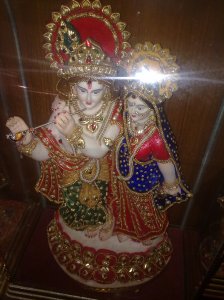The Gyan Yog has been spelt by various writers as Jnana Yog also. But Gyan Yoga appears to me the right translation of Knowledge in Hindi.
Karma is required to be done physically. So, all acts, requiring primarily physical execution are dealt in Karma Yog. Though Karma yog requires best mental function too, but here physical work is supreme. They are usually the rulers, fighters, sportsman etc.
The knowledge part, observation, investigation, inference, discussions, decisions, decision between right or wrong and all acts requiring primarily cerebral functions, are classified under Gyan (Jnana) Yog. They are the teachers and consultants.
Bhakti yog is happiness through emotions or limbic cortex and service. This relates to complete submission on the part of individual to anybody whom he thinks devoted to. He may be God as per person’s own thinking or any individual the person finds devoted to. Here spirit of service is supreme rather than perfection in mental or physical activity.
Physically or mentally capable persons, in a position to do socially required tasks, doing their work in best possible way, working honestly, truthfully and with a service above self motive, are supposed to pursue Karma Yog or Gyan Yog. These two categories require highest degree of mental or physical perfection and responsibility. They are rulers and teachers in their sphere of activity.
Third category, I think is for personalities, who can not take to first two paths, because of age or other reasons. This category also provides peace and Moksha to persons who followed first two paths in their prime life and have now retired from these paths.
Three paths are intimately intermixed to generate various paths with varying percentage of each three. The three paths are suitable for different types of personalities or stages in life.
Moksha is probably the complete satisfaction after which there is no desire to know or achieve physically in life. As per Lord Krishna one can achieve Moksha in all three ways.
I will welcome readers’ wisdom to rectify my shortcomings in understanding facts of life.
This piece is in response to

Dr.Mahesh Chandra Panda said,
August 25, 2010 @ 4:09 am
*Ramanuja`s commentary on the Bhagavad Gita analyses the practice of Karma, Jnana and Bhakti Yoga to show by which a Jivatma can pursue this goal; said Sri M.V. Anantapadmanabhacharya in a lecture. The first six chapters are devoted to the exposition of the method of Self-realisation through Karma Yoga and Jnana yoga. The second set of six chapters deals with Bhakti Yoga and states that the object of Bhakti is God. The third set sums up and clarifies the essence of what was earlier explained.
*Excerpt from ‘The Lord`s teaching’ in the caption ‘Religion’ published in THE HINDU on August 18,2010.
Dr Madan Goyal said,
August 25, 2010 @ 2:26 pm
I am still a medical student and analyze Gita through a medical mind.
I could never keep my attention intact while reading the versions of various commentators on Gita.
I don’t find any mismatch in my medical knowledge and my understanding of Gita.
Every body analyzes Gita within his background of knowledge.
It is a full fledged subject in itself. It is common answer to problems of all people living on this earth.
Thanks for the views and references.
Kindly keep guiding.
Love to Sara.
Jingle said,
August 27, 2010 @ 10:43 pm
pick three awards from my post,
pass them to 1 to 10 blogging friends with whom you believe that they deserve them.
have fun!
Take good care.
Dr Madan Goyal said,
August 29, 2010 @ 2:20 am
I visited the link.
Beautiful awards.
I am not yet conversant with rest of the procedure.
Thanks for the graet words